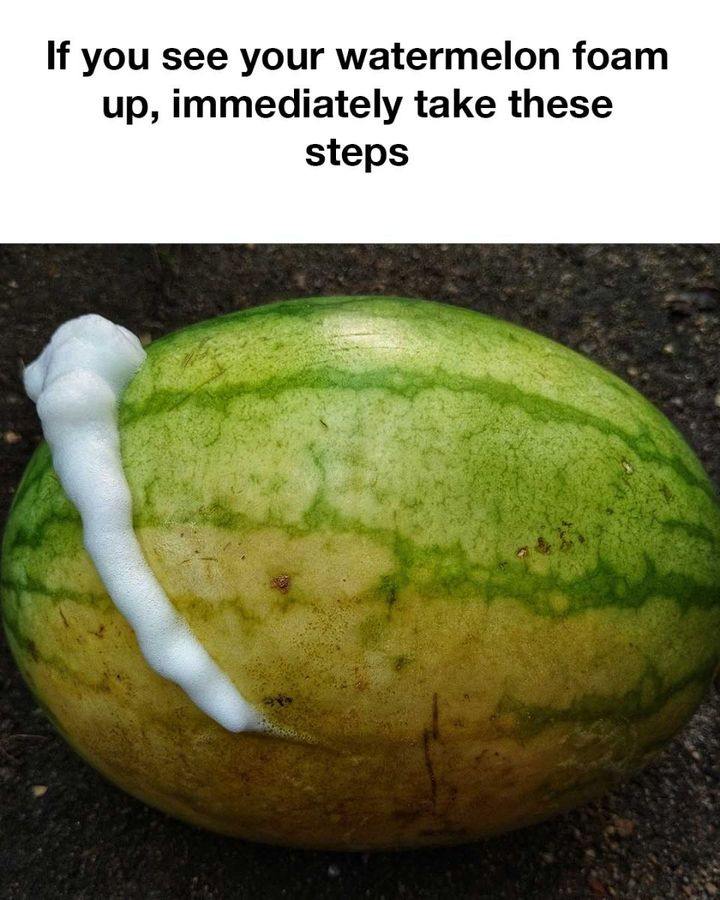ADVERTISEMENT

Oh man, I just saw this happen to mine the other day! Hubby almost ate it!
Immediate Actions to Take:
Don’t Eat It: Avoid consuming any part of the foaming watermelon.
Isolate the Fruit: Move the watermelon away from food and surfaces to avoid contamination.
Dispose of It Safely: Put the watermelon in a sealed bag or container and dispose of it in an outdoor trash bin.
Clean Up: Thoroughly wash your hands and clean any surfaces that came into contact with the fruit to eliminate any potential bacteria or chemicals.
Monitor for Symptoms: If anyone in your household accidentally ate some of the fruit, keep an eye out for any symptoms of food poisoning, such as stomach pain or vomiting. If symptoms appear, seek medical attention immediately.
Preventing Foaming in the Future:
Inspect Before Buying: Look for any signs of damage, such as cracks or soft spots on the rind, and avoid overly shiny or sticky melons, which could indicate chemicals.
Store Properly: Keep watermelons in a cool, dry place. If you’ve cut into it, store leftovers in a sealed container in the fridge.
Wash Before Cutting: Always wash the rind before cutting into it to remove any dirt or bacteria that could transfer to the fruit.
Eat Promptly: Consume cut watermelon within a few days to prevent bacterial growth.
It’s good to be cautious, especially with something as unpredictable as a foaming watermelon! I hope your husband’s safe and sound after the close call.
Don’t Eat It: Avoid consuming any part of the foaming watermelon.
Isolate the Fruit: Move the watermelon away from food and surfaces to avoid contamination.
Dispose of It Safely: Put the watermelon in a sealed bag or container and dispose of it in an outdoor trash bin.
Clean Up: Thoroughly wash your hands and clean any surfaces that came into contact with the fruit to eliminate any potential bacteria or chemicals.
Monitor for Symptoms: If anyone in your household accidentally ate some of the fruit, keep an eye out for any symptoms of food poisoning, such as stomach pain or vomiting. If symptoms appear, seek medical attention immediately.
Preventing Foaming in the Future:
Inspect Before Buying: Look for any signs of damage, such as cracks or soft spots on the rind, and avoid overly shiny or sticky melons, which could indicate chemicals.
Store Properly: Keep watermelons in a cool, dry place. If you’ve cut into it, store leftovers in a sealed container in the fridge.
Wash Before Cutting: Always wash the rind before cutting into it to remove any dirt or bacteria that could transfer to the fruit.
Eat Promptly: Consume cut watermelon within a few days to prevent bacterial growth.
It’s good to be cautious, especially with something as unpredictable as a foaming watermelon! I hope your husband’s safe and sound after the close call.
ADVERTISEMENT